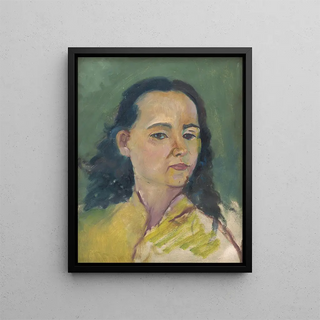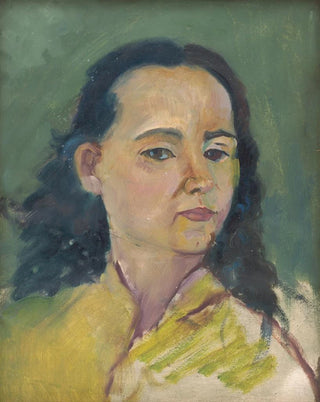Art print | Portrait of a woman - Arnold Peter Weisz-Kubínčan


View from behind

Frame (optional)
In the vast panorama of art history, certain works stand out for their ability to capture the human essence in all its complexity. "Portrait of a Woman - Arnold Peter Weisz-Kubínčan" is part of this tradition, offering an intimate glimpse into the beauty and depth of the feminine soul. This portrait, imbued with rare delicacy, invites the viewer to an introspective contemplation, revealing the emotions and thoughts hidden behind the serene face of the depicted woman. This masterpiece, both classic and timeless, transcends eras and styles, becoming a centerpiece that draws attention and evokes admiration.
Style and uniqueness of the work
Weisz-Kubínčan's work is characterized by a remarkable mastery of light and shadow, which gives his portraits an almost lifelike dimension. In "Portrait of a Woman," every detail, from the penetrating gaze to the subtle nuances of the skin, demonstrates refined technique and keen artistic sensitivity. The artist manages to create an intimate atmosphere, where the viewer feels invited to share a moment of closeness with the subject. The colors, carefully chosen, evoke a soft and soothing palette, reinforcing the impression of serenity emanating from the work. This portrait does not merely depict a female figure; it tells a story, that of a woman whose presence is both strong and delicate, thus capturing the balance between strength and vulnerability.
The artist and his influence
Arnold Peter Weisz-Kubínčan, a Slovak-born artist, managed to leave his mark on his era through a unique style that blends classical influences and modernity. Trained at the most prestigious art schools, he developed a personal approach that allowed him to stand out in the artistic community. His work, often focused on the representation of the human figure, reflects a deep understanding of psychology and emotions. Weisz-Kubínčan's influence is felt in many artistic circles, inspiring generations of artists to explore the complexity of human relationships through the lens of portraiture. His

Matte finish

View from behind

Frame (optional)
In the vast panorama of art history, certain works stand out for their ability to capture the human essence in all its complexity. "Portrait of a Woman - Arnold Peter Weisz-Kubínčan" is part of this tradition, offering an intimate glimpse into the beauty and depth of the feminine soul. This portrait, imbued with rare delicacy, invites the viewer to an introspective contemplation, revealing the emotions and thoughts hidden behind the serene face of the depicted woman. This masterpiece, both classic and timeless, transcends eras and styles, becoming a centerpiece that draws attention and evokes admiration.
Style and uniqueness of the work
Weisz-Kubínčan's work is characterized by a remarkable mastery of light and shadow, which gives his portraits an almost lifelike dimension. In "Portrait of a Woman," every detail, from the penetrating gaze to the subtle nuances of the skin, demonstrates refined technique and keen artistic sensitivity. The artist manages to create an intimate atmosphere, where the viewer feels invited to share a moment of closeness with the subject. The colors, carefully chosen, evoke a soft and soothing palette, reinforcing the impression of serenity emanating from the work. This portrait does not merely depict a female figure; it tells a story, that of a woman whose presence is both strong and delicate, thus capturing the balance between strength and vulnerability.
The artist and his influence
Arnold Peter Weisz-Kubínčan, a Slovak-born artist, managed to leave his mark on his era through a unique style that blends classical influences and modernity. Trained at the most prestigious art schools, he developed a personal approach that allowed him to stand out in the artistic community. His work, often focused on the representation of the human figure, reflects a deep understanding of psychology and emotions. Weisz-Kubínčan's influence is felt in many artistic circles, inspiring generations of artists to explore the complexity of human relationships through the lens of portraiture. His






